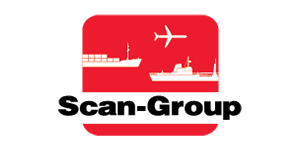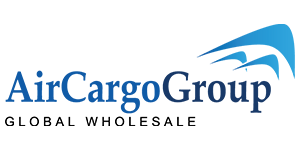
New COVID quarantine rules for cargo workers at China’s key gateways are putting more strain on an already fragile air cargo supply chain. The more contagious Delta variant of the virus has resulted in an uptick in cases.
Lockdowns and stricter quarantine measures implemented to contain outbreaks are impacting cargo operations at both airports and seaports. According to supply chain risk analyst, Everstream Analytics, pickup and delivery services, as well as air cargo operations have seen the most disruptions, with 15 airports identified as having been affected.
Nanjing Lukou International Airport and Yangzhou Taizhou International Airport had both been temporarily closed earlier in August. In the meantime, Beijing airport had been operating at around 43% capacity, Shanghai Pudong at around 33% capacity, and Xiamen Airport (XIN) at 66% earlier in the month with each airport having canceled hundreds of flights.
China Cargo Airlines and China Eastern Airlines have suspended passenger belly freighters until the end of August due to labor shortages stemming from crew members testing positive for COVID-19.
Everstream Analytics said major airports in China had restricted operations to perform virus disinfections which have resulted in flight capacity and staffing shortages. The company added, “The situation is likely to cause airport congestion and delays and trigger further rate increases due to lost air cargo capacity.”Source: Journal of Commerce.
Source: Air Cargo News
SHIPCO AIRFREIGHT SAYS …
The situation has deteriorated over the weekend. More COVID cases among ramp crew have been detected in Shanghai Pudong Airport (PVG), and the airport has almost entirely come to a halt. A long list of carriers have canceled all or some frequencies to Shanghai. Those that are left operating are only accepting bookings weeks out and at very high rates. To assist our customers, Shipco Airfreight has initiated an AirSea service via Incheon (ICN) in South Korea. Cargo is flown to ICN and loaded in our scheduled LCL boxes to Shanghai. Transit time is 5 – 7 days from arrival in Incheon.
Ningbo’s Meishan terminal is expected to partially reopen on August 24, with a full reopening scheduled for September 1, shipping agent sources in Ningbo told Splash. Agents anticipate it will take 10 days to two weeks to clear the boxship backlog with the whole port back to normal operations by the middle of next month.
Meishan terminal has been closed since August 11 due to a single case of COVID-19. The facility accounts for around 20% of Ningbo-Zhoushan’s total throughput of about 30m TEU, with Ocean Alliance carriers being the main users.
Ningbo port authorities said in an operational update it had been able to process 90% of container volumes between Wednesday and Friday despite Meishan’s closure. Carriers’ contingency plans following the closure have involved re-routing vessels to other terminals in Ningbo while some liners have omitted port calls to Ningbo.
According to an update from Ningbo’s municipal government, more than 90,000 people have been tested over the past week with no further positive cases reported.
|
Alliance networks operating between Asia and North Europe are facing delays of up to a month due to worsening congestions at origin and destination ports.
According to eeSea data, the AE55/Griffin loop which sails from Asia to North Europe, has a pro-forma round-trip voyage time of 76 days. 62 days, the equivalent of 81%, are spent at sea with 14 days allocated to time at port. However, due to worsening port congestion at Asian and North European terminals, time in port or waiting for berthing windows has increased substantially, to around 40% of the schedule.
Hapag-Lloyd CEO Rolf Habben Jansen told investors and analysts last week that average voyage delay days had “tripled” in the first half of this year, compared with the same period of 2020. He said container usage days had also increased, by 16% compared with H1 20, due to boxes being stuck on ships or delayed in overwhelmed landside sectors.
“That means we need more boxes to ship the same amount of cargo, and more ships which we cannot get, to carry them,” he said.
The Loadstar reports a carrier source saying, “Delays in North Europe were bad enough, but now we are facing congestion in China the schedules are shot to pieces and, effectively, they have become rolling schedules.”
Source: The Loadstar
Port of Los Angeles executive director, Gene Seroka said during an operations update that year-to-date container volumes were up in July by 36.8% over 2020 levels, reaching 6,318,675 TEUs. Imports were up by 2.9% and exports declined by -27.6% in July 2021 compared to July 2020. The number of empty containers being transported from the port rose by 20.4% (see Table 1).
Seroka said that anchorages and dwell times are trending in the wrong direction with 75% of ships arriving at port being sent straight to anchor in July, up from 50% in June. He pointed out that dwell times at terminal is at 5.3 days, on dock rail dwell time is running over 13 days and street dwell times for trucks waiting to unload containers at warehouses is 8.3 days.
The challenge for ports, terminals and dockworkers is that even if they increased productivity in moving containers, there is congestion at other points in the supply chain that does not currently support greater velocity.
Seroka said that the COVID-related shutdown at the Port of Ningbo in China is not currently a major concern because the shutdown only involves “one of four terminals” at the port.
Seroka said that the decision by the Union Pacific and the BNSF to pause rail service to Chicago was a “difficult decision for both” companies adding that at one point “Union Pacific had 25 miles of train sitting outside their facility at Joliet, Illinois. BNSF, at the same time, had 22 miles of train waiting entrance…cargo is simply not being picked up fast enough.”
UP and BNSF combined, “made up about 15% of our overall cargo volumes (at the Port of Los Angeles) that was paused as a result of those recent decisions. The dwell times for rail have increased because of this, but containers had no place to go. It was a tough call, but the right call,” Seroka said.
Port of Los Angeles executive director, Gene Seroka said during an operations update that year-to-date container volumes were up in July by 36.8% over 2020 levels, reaching 6,318,675 TEUs. Imports were up by 2.9% and exports declined by -27.6% in July 2021 compared to July 2020. The number of empty containers being transported from the port rose by 20.4% (see Table 1).
Seroka said that anchorages and dwell times are trending in the wrong direction with 75% of ships arriving at port being sent straight to anchor in July, up from 50% in June. He pointed out that dwell times at terminal is at 5.3 days, on dock rail dwell time is running over 13 days and street dwell times for trucks waiting to unload containers at warehouses is 8.3 days.
The challenge for ports, terminals and dockworkers is that even if they increased productivity in moving containers, there is congestion at other points in the supply chain that does not currently support greater velocity.
Seroka said that the COVID-related shutdown at the Port of Ningbo in China is not currently a major concern because the shutdown only involves “one of four terminals” at the port.
Seroka said that the decision by the Union Pacific and the BNSF to pause rail service to Chicago was a “difficult decision for both” companies adding that at one point “Union Pacific had 25 miles of train sitting outside their facility at Joliet, Illinois. BNSF, at the same time, had 22 miles of train waiting entrance…cargo is simply not being picked up fast enough.”
UP and BNSF combined, “made up about 15% of our overall cargo volumes (at the Port of Los Angeles) that was paused as a result of those recent decisions. The dwell times for rail have increased because of this, but containers had no place to go. It was a tough call, but the right call,” Seroka said.
Source: American Journal of Transportation
Ocean carriers are said to be considering a new round of blank sailings from Asia around China’s Golden Week Holiday which falls during the first week of October. Carriers have traditionally reduced capacity around the Golden Week holiday to optimize vessel utilization and preserve rate levels following a typical slow-down in demand during the winter months.
However, the major Trans-Pacific and Asia to Europe tradelanes continue to deal with skyrocketing shipping costs with no signs of easing. Additionally, the shutdown of Ningbo’s Meishan terminal has meant space shortages will persist leading up to the national holiday.
Shipping lines will likely look to bridge the current year’s Golden Week with network adjustments. This might come in the form of blank sailings, slidings to regain schedules or
dry-docking ships. While carriers have postponed all non-essential dry-docking of their own vessels and persuaded the owners of their chartered ships to do likewise, the special surveys and repairs will eventually need to be carried out.
Dry-docking ships will give the carriers another capacity tool to deploy, one which would leave them open to less criticism from shippers and the attention of regulators, than they would expect after blanking sailings.
Source: The Loadstar











